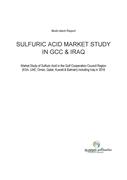42 Results for : sulfuric
-

Early Balloons and Airships: The History and Legacy of Dirigibles Before the Invention of Airplanes , Hörbuch, Digital, ungekürzt, 91min
The Wright Brothers initially underestimated the difficulties involved in flying, and they were apparently surprised by the fact that so many others were working on solving the "problem of human flight" already. Decades before their own historic plane would end up in the National Air & Space Museum, Wilbur and Orville asked the Smithsonian for reading materials and brushed up on everything from the works of their contemporaries to Leonardo Da Vinci. Undeterred by the work, and the fact that several would-be pioneers died in crashes trying to control gliders, the Wright Brothers tested out gliding at Kitty Hawk in North Carolina for several years, working to perfect pilot control before trying powered flight.In December 1903, the brothers had done enough scientific work with concepts like lift to help their aeronautical designs, and they had the technical know-how to work with engines. On December 17, the brothers took turns making history’s first successful powered flights. The fourth and final flight lasted nearly a minute and covered nearly 900 feet. The Wright Flyer I had just made history, and minutes later it would be permanently damaged after wind gusts tipped it over; it would never fly again.A decade later, aircraft appeared in the skies over the battlefields of World War I, but they did not represent a complete novelty in warfare either, at least not during the early months of World War I. While airplanes had never before appeared above the field of war, other aerial vehicles had already been in use for decades, and balloons had carried soldiers above the landscape for centuries to provide a high observation point superior to most geological features. The French used a balloon for this purpose at the Battle of Fleurus in 1794, and by the American Civil War, military hydrogen balloons saw frequent use, filled from wagons generating hydrogen from iron filings and sulfuric acid. The balloonist Thaddeus Lowe persuaded President Abraham Linco ungekürzt. Language: English. Narrator: David Bernard. Audio sample: https://samples.audible.de/bk/acx0/162232/bk_acx0_162232_sample.mp3. Digital audiobook in aax.- Shop: Audible
- Price: 9.95 EUR excl. shipping
-

Famous Dirigibles: The History and Legacy of Lighter than Air Vehicles from the Renaissance to Today , Hörbuch, Digital, ungekürzt, 195min
The Wright Brothers initially underestimated the difficulties involved in flying, and they were apparently surprised by the fact that so many others were working on solving the “problem of human flight” already. Decades before their own historic plane would end up in the National Air & Space Museum, Wilbur and Orville asked the Smithsonian for reading materials and brushed up on everything from the works of their contemporaries to Leonardo Da Vinci. Undeterred by the work, and the fact that several would-be pioneers died in crashes trying to control gliders, the Wright Brothers tested out gliding at Kitty Hawk in North Carolina for several years, working to perfect pilot control before trying powered flight. In December 1903, the brothers had done enough scientific work with concepts like lift to help their aeronautical designs, and they had the technical know-how to work with engines. On December 17, the brothers took turns making history’s first successful powered flights. The fourth and final flight lasted nearly a minute and covered nearly 900 feet. The Wright Flyer I had just made history, and minutes later it would be permanently damaged after wind gusts tipped it over; it would never fly again.A decade later, aircraft appeared in the skies over the battlefields of World War I, but they did not represent a complete novelty in warfare either, at least not during the early months of World War I. While airplanes had never before appeared above the field of war, other aerial vehicles had already been in use for decades, and balloons had carried soldiers above the landscape for centuries to provide a high observation point superior to most geological features. The French used a balloon for this purpose at the Battle of Fleurus in 1794, and by the American Civil War, military hydrogen balloons saw frequent use, filled from wagons generating hydrogen from iron filings and sulfuric acid. The balloonist Thaddeus Lowe persuaded President Abraham Lincoln ungekürzt. Language: English. Narrator: David Bernard. Audio sample: https://samples.audible.de/bk/acx0/164006/bk_acx0_164006_sample.mp3. Digital audiobook in aax.- Shop: Audible
- Price: 9.95 EUR excl. shipping
-

Modern Balloons and Airships: The History and Legacy of Dirigibles During the 20th Century , Hörbuch, Digital, ungekürzt, 136min
The Wright Brothers initially underestimated the difficulties involved in flying, and they were apparently surprised by the fact that so many others were working on solving the “problem of human flight” already.Decades before their own historic plane would end up in the National Air and Space Museum, Wilbur and Orville asked the Smithsonian for reading materials and brushed up on everything, from the works of their contemporaries to Leonardo da Vinci. Undeterred by the work and the fact that several would-be pioneers died in crashes trying to control gliders, the Wright Brothers tested out gliding at Kitty Hawk in North Carolina for several years, working to perfect pilot control before trying powered flight. In December 1903, the brothers had done enough scientific work with concepts like lift to help their aeronautical designs, and they had the technical know-how to work with engines. On December 17, the brothers took turns making history’s first successful powered flights. The fourth and final flight lasted nearly a minute and covered nearly 900 feet. The Wright Flyer I had just made history, and minutes later, it would be permanently damaged after wind gusts tipped it over; it would never fly again. A decade later, aircraft appeared in the skies over the battlefields of World War I, but they did not represent a complete novelty in warfare either, at least not during the early months of World War I. While airplanes had never before appeared above the field of war, other aerial vehicles had already been in use for decades and balloons had carried soldiers above the landscape, for centuries, to provide a high observation point superior to most geological features. The French used a balloon for this purpose at the Battle of Fleurus in 1794. By the American Civil War, military hydrogen balloons saw frequent use, filled from wagons generating hydrogen from iron filings and sulfuric acid. The balloonist Thaddeus Lowe ungekürzt. Language: English. Narrator: David Bernard. Audio sample: https://samples.audible.de/bk/acx0/162958/bk_acx0_162958_sample.mp3. Digital audiobook in aax.- Shop: Audible
- Price: 9.95 EUR excl. shipping
-

Under Pressure: The Final Voyage of Submarine S-Five , Hörbuch, Digital, ungekürzt, 449min
Hanging on display in the United States Navy Yard in Washington, D.C., is a battered and scratched steel plate, two feet in diameter, edged with more than one hundred little semicircles. For more than 80 years, people have wondered how it came to be there and at the story it could tell. Under Pressure: The Final Voyage of Submarine S-Five is that story. On Monday, August 30, 1920, the S-Five, the newest member of the U.S. Navy's fleet of submarines, departs Boston on her first cruise - to Baltimore for a recruiting appearance at the end of the week. Two days later, as part of a routine test of the submarine's ability to crash dive, her crew's failure to close a faulty valve sends 75 tons of seawater blasting in. Before the valve can be jury-rigged shut, the S-Five sits precariously on the ocean floor under 180 feet of water. The salt in the seawater combines with the sulfuric acid in the sub's batteries to create a cloud of chlorine gas. They have little air, no water, and only the dimmest of light by which to plan their escape. By shifting the water in the sub toward the bow torpedo room, the crew is able to stand the 240-foot-long sub on its nose, bringing it close to vertical, and, using trigonometry, he calculates that at least part of the boat's stern is now above sea level. In a race against time the crew starts cutting a hole out of the highest point in the sub: the telephone-booth-size tiller room. With no acetylene torch, no power tools -- nothing but ratchet drills and hacksaws -- the crew must cut through nearly an inch of strengthened steel or die in the attempt. An incredible drama, a story of heroism and of heroes, Under Pressure is that most remarkable of books, a true story far more dramatic than any fiction. ungekürzt. Language: English. Narrator: Michael Butler Murray. Audio sample: https://samples.audible.de/bk/adbl/013208/bk_adbl_013208_sample.mp3. Digital audiobook in aax.- Shop: Audible
- Price: 9.95 EUR excl. shipping
-

The Dogfights of the World Wars: The Evolution and History of the Fight in the Skies During World War I and World War II , Hörbuch, Digital, ungekürzt, 192min
The first aircraft to appear in the skies over the battlefields of World War I showed few signs of the dominant future of airplanes in warfare. Small, fragile, and slow, they provided no hint of the sleek jet fighters that would one day slash across the skies of Earth faster than sound to unleash the lethal blast and fire of sophisticated missiles, or the bombers able to level an entire city with one nuclear bomb. That said, they did not represent a complete novelty in warfare either, at least not during the early months of World War I.While airplanes had never before appeared above the field of war, other aerial vehicles had already been in use for decades, and balloons had carried soldiers above the landscape for centuries to provide a high observation point superior to most geological features. The French used a balloon for this purpose at the Battle of Fleurus in 1794, and by the American Civil War, military hydrogen balloons saw frequent use, filled from wagons generating hydrogen from iron filings and sulfuric acid. The balloonist Thaddeus Lowe persuaded President Abraham Lincoln to use the airships for observation, communicating troop movements to the ground with a telegraph wire.At first, airplane improvements occurred in an ad hoc, almost accidental manner during the war. However, when pilots’ mounting of armaments on airplanes proved a successful means of defeating other aircraft and even attacking men on the ground, a much more active and systematic development of warplanes began across the continent. Each advance prompted a countermeasure, as the two sides strove for primacy in a deadly, unforgiving environment which rewarded real advances in equipment and tactics with survival and punished poor ideas with death.The Dogfights of the World Wars: The Evolution and History of the Fight in the Skies During World War I and World War II looks at how technology and tactics evolved during the wars. You will learn about dogfights li ungekürzt. Language: English. Narrator: Ken Teutsch. Audio sample: https://samples.audible.de/bk/acx0/105500/bk_acx0_105500_sample.mp3. Digital audiobook in aax.- Shop: Audible
- Price: 9.95 EUR excl. shipping
-

A Practical Guide to the Manufacture of Sulfuric Acid Oleums and Sulfonating Agents
A Practical Guide to the Manufacture of Sulfuric Acid Oleums and Sulfonating Agents - Auflage 2013: ab 96.49 €- Shop: ebook.de
- Price: 96.49 EUR excl. shipping
-

A Practical Guide to the Manufacture of Sulfuric Acid Oleums and Sulfonating Agents
A Practical Guide to the Manufacture of Sulfuric Acid Oleums and Sulfonating Agents: ab 74.99 €- Shop: ebook.de
- Price: 74.99 EUR excl. shipping
-

Mechanism of Depolymerization of Cellulose in Low Sulfuric Acid Medium. Kinetic Investigation and Stochastic Simulation
Mechanism of Depolymerization of Cellulose in Low Sulfuric Acid Medium. Kinetic Investigation and Stochastic Simulation: ab 29.99 €- Shop: ebook.de
- Price: 29.99 EUR excl. shipping
-

Die Schwefelsäurefabrikation
Die Schwefelsäurefabrikation - The Manufacture of Sulfuric Acid / La Fabrication de l'Acide Sulfurique: ab 42.99 €- Shop: ebook.de
- Price: 42.99 EUR excl. shipping
-

SULFURIC ACID MARKET STUDY IN GCC & IRAQ
SULFURIC ACID MARKET STUDY IN GCC & IRAQ - Market Study of Sulfuric Acid in the Gulf Cooperation Council Region (KSA UAE Oman Qatar Kuwait & Bahrain) including Iraq in 2016: ab 62.99 €- Shop: ebook.de
- Price: 62.99 EUR excl. shipping